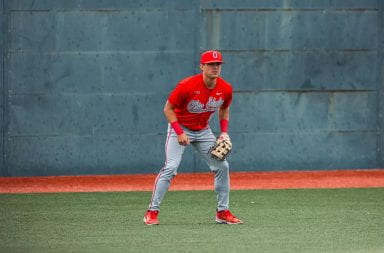The Historic Costume & Textiles Collection, sponsored by the College of Human Ecology through the department of consumer sciences, will be on display at Campbell Hall through the end of October.
Gayle Strege, the curator of the collection, said the program is funded by small endowments, the group’s annual dues and donations.
The collection encompasses a wide variety of eras and styles from as early as 1450 and as recent as 2001.
“We have more than 10,000 pieces of men and women’s clothing and accessories,” Strege said.
The clothes, however, aren’t always the most interesting part of the collection.
“We collect the stories that go along with the clothes,” she said. “It helps relate the materials to human nature and events.”
Dr. Charles Noel, a professor in textile sciences at Ohio State, also talked about the collection.
“What we have here (at OSU) are examples of wonderful garments and textiles,” he said. “We’re looking back at older technologies and observing how people created these wonderful works of art and generate their own culture and experiences from these.”
The collection’s origins span several continents; it displays costumes and textiles from Africa, Southeast Asia, Poland, Mexico and the United States, among many others.
The clothing however, is not limited to just being on display.
“Some of the clothing actually goes into the classroom for the students’ learning,” Strege said.
Students studying in the department of consumer sciences have the opportunity to observe the textiles up close for classroom assignments and background learning.
Trish Cunningham, a professor in the department of consumer sciences, said the costumes are used in OSU classrooms to help students learn about the past.
“I bring garments into the classroom to show students examples of actual clothing worn in the 18th or 19th century to actually see the changes in the silhouettes,” Cunningham said. “It’s a visual tool that helps the students appreciate the complexity of clothing from the past, and how the textiles that are used in the garments of the past are much different from the textiles used in today’s clothing,” Cunningham said.
The garments are preserved with care, but are used by many departments for visual teaching.
“Teachers in theater, art history, and other departments use the collection,” Cunningham said. “It gets a lot of use. We don’t just put them in storage so no one can see them.”
“Some of the textiles are as old as the 1400s and were marveled at by English kings and noblemen,” Noel said. “They provide our own designers today with inspiration for their own designs. It’s just really exciting to see what they did back in those days. It’s great to see these wonderful and elegant designs – that’s the best part about it.”
The collection will be on display between 11 a.m. and 4 p.m.


